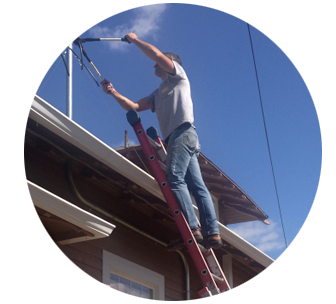Healthy cashflow is something we all want for our business, but should you utilize your billable workforce to do your billing and collections?
This is one of the top questions for growing electrical contracting businesses. At first glance this is a no-brainer, especially for companies who do a lot of T&M work. After all, who doesn’t want better cash flow? Getting paid on the spot puts money in the bank without wait-time and the normal chasing down of accounts receivable. With tun-key technologies paving the way, companies worldwide are jumping onboard the “pay onsite” bandwagon. The immediate payoff is self explanatory. Cash flow is immediately improved and the burden of collections is lighter in the office.
Unfortunately, for some the story changes 6-12 months down the road when their financials for the year start to tally up. Cash flow is up but wait, what happened to the net profit margin? It’s down, sometimes as much as 40% (depending on the volume of field generated invoices). So, what happened? Where did the money go?
As it turns out, there are a number of factors to consider before you start taking your billing and collection process to the field.
Consider the following:
- Cost – If you are using your laborors to generate invoices, you are utilizing the most expensive part of your workforce to do administrative work. Hour for hour, administrative employees are much less expensive to your business.
- Efficiency – You are also using your billable workforce. The 10-12 minutes they spend generating an invoice, waiting for the customer to find their credit card and processing payment could be spent getting to the next job. By the end of the day, this could be the difference between getting 4 jobs completed instead of 5 or 6.
- Momentum. Stopping to generate an invoice, get signature approval, swipe a credit card, make small talk and process a receipt creates a physical and mental pause in the workflow cycle. Again, by day/week’s end these precious minutes can be more costly than you think.
- Accuracy/Efficiency – This instance of error from field generated invoices is measurably higher that those managed through a dedicated administrative process. Your field workers are skilled tradesmen and laborers. Your bookkeepers and administrative professionals have been trained to manage these specific processes.
Let’s say you charge a flat rate of $75 for an average service call that takes 1 hour to complete. and it takes an average of 7 minutes to generate an invoice, collect and process payment. In an 8-hour workday where every minute is precious, that 7 minutes, multiple times over could be the difference between getting another service call completed that day. Moreover, if you are paying that employee hourly, you are increasing their cost-per-minute to your company as much as 11% while decreasing the amount of service calls they can complete in one day.
So how do you charge and collect from the field without losing productivity and profit. In short, you increase your rates. Depending on your other costs of doing business, this could be anywhere from 20 – 25% or more. So, an $80 service call will now be $96 or $100. In a world without competition, this is easily done. However, in the real world, can you charge that much without losing business to your competitors? If you have positioned yourself in a value driven environment, you might be OK..If you are in a price competitive marketplace, it could affect your business negatively.
The bottom-line is that deciding to incorporate onsite invoicing and collection into your operations is, in fact, a bottom-line decision and requires some homework, number crunching and a bit of strategic planning. There are in fact, companies who manage this process effectively. Here are some common denominators to their success.
- Do the Math. Spend the time to crunch the numbers. Consider the field invoicing process itself as an additional cost of operation. Raise your pricing appropriately.
- Introduce the process slowly. Start with one or two of your reliable field workers. Measure the outcome and then make adjustments to pricing, scheduling and other factors. Monitor your sales performance and see if pricing has had any impact.
- Finally, be ruthless with your selection of merchant (credit card processing services). In most cases, increased field payments will cause a higher percentage of your revenues to have processing fees. If your sales volumes are high enough, get your own merchant service. Most often, the turn-key, no-monthly fee services (Paypal, Square Up, etc) are charging almost a full per cent above the average exchange rate in exchange for their “no monthly fee” service. This comes right out of your profit margin.
In the end, the secret to the success here lies with solid planning, careful measurement and a strong knowledge of the mechanics of your business.

